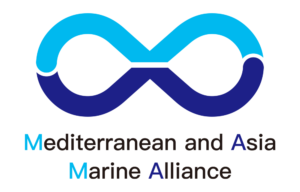MAMA Biweekly Newsletter- Apr.7th 2021

Offshore Wind Power Operation and Maintenance Challenges in Taiwan
Exclusive Interview – Alex Ma (General Manager of Lian Tat Company)
According to the International Renewable Energy Agency, Asia’s offshore wind market will account for 60% of the global market by 2050, indicating that the main battleground will focus on the Asia – Pacific region, especially in Taiwan. Taiwan’s government offshore wind policy adopts a three-stage strategy of First Demonstration, Second Potential, then Block. The second phase of the potential wind farm project is currently under construction, and the developer will be responsible for establishing a localized industrial chain.
Taiwan manufacturers entering the offshore wind industry market from scratch have many challenges, including the price competitiveness of components, establishing a localized industry chain, and technology learning curve. Besides, the familiarity of the policy process and infrastructure’s pain points need to be overcome by experienced international players and local manufacturers. For example, DEME Offshore has established a joint venture with CSBC Corporation, which has a foundation in marine engineering and can provide onshore knowledge and expansion strategies. However, the biggest challenge in building a localized industrial chain is the urgency of time. Under time pressure, the international experts and Taiwan local industry cooperation must uphold three principles: respect, help and maintain the relationship.
Wind farm operation and maintenance have always been the focus of discussion. Now is the best time to build up Taiwan’s local wind farm O&M strength. Due to the current global oil recession, oil exploration vessels can be converted into maintenance vessels. Moreover, the pandemic has prevented foreign engineers from coming to Taiwan and wind power. European companies recognize the importance of localizing the supply chain and cultivating Taiwan’s local maintenance talents. Taiwan has the world’s best wind farms, and although there are many earthquakes and typhoons, it’s the best disaster test site. I believe Taiwan will be a role model for Asian offshore wind development.
Lian Tat Company – Your Trusted Maritime Partner in Asia
https://www.liantat.com.tw/en/

The controversy over local content requirements of wind power development
Opinion – CY Huang (President of FCC Partners Asia; Founder of MAMA)
European Union Officials recently called on the Taiwan government to follow WTO regulations on wind power development and drop its strict domestic requirements. The Taiwan government requires a significant portion of the country’s wind power infrastructure must be built by domestic companies, which creates an unnecessary burden on foreign investors and reduces Taiwan’s competitiveness. The EU, which has set an objective to increase Europe’s offshore wind capacity from 12 Gigawatt to at least 60 Gigawatt by 2030 and 300 Gigawatt by 2050, has been a major investor sector in Taiwan.
Can Taiwan’s manufacturing, steel, and heavy technology industries really keep up with the standards required for offshore wind power? In the past, some foreign companies have responded to the media that Taiwanese manufacturers have learning difficulties in the face of new steel objects. Besides, there has been news of foreign companies returning orders or local manufacturers finding defects before delivery. Offshore wind-related facilities must last for at least 20 years. The quality standards will be more stringent than those for land-based use, so foreign manufacturers will demand quality when delivering the products and not allow any defects.
Taiwan will construct at least five wind farms this year. We can ask ourselves if the port energy, workforce supply, and supporting system meet such a great and concentrated demand? Under the government has to meet the policy target within the stipulated time, will such a tough attitude make it impossible to implement localization to meet the target?
To become a regional hub, except for the government’s flexible policy, considering whether to change the original time point for meeting the target, the domestic industry should actively cooperate with the foreign manufacturers to upgrade the technology level. Thus, we can supply Taiwan’s domestic industry’s need, moreover, entering the world supply chain and compete with foreign countries.

Ampelmann Supports Asia Offshore Wind
* Dutch offshore access provider Amplemann has secured five contracts for eight projects, five of which are in offshore wind.
* One of the projects will use the Amplemann E1000 system to provide safe offshore access for personnel and cargo in the construction phase of an offshore wind farm off the coast of Taiwan
* Amplemann business developer, said: “Securing these projects in the renewable market marks a turning point for the APAC region, as operations in the region used to be solely in Oil & Gas.”
For more info at https://reurl.cc/zb4DZp
The Philippines to Build First Offshore Wind Farm: What Lessons Can It Learn From Asian Neighbours?
* Like its Asian neighbors Taiwan, Vietnam, Japan, South Korea, India, and China, the Philippines is ramping up floating wind, turbines fixed to tethered structures that float to meet its soaring energy demand and reach its climate targets.
* The Philippines is one of the eight global emerging markets which could fast-track its floating wind projects with the potential to produce 160GW in offshore areas within 200 kilometers of its coast, according to a report released by the World Bank in 2019.
* Among Asian markets, China is an “outlier” as it has such a huge local demand that it does not need to worry about selling its offshore wind energy overseas
For more info at https://reurl.cc/v54vvL
Why Asia’s Coming Offshore Wind Boom Can’t Just Be a Carbon Copy of Europe’s?
* The technical challenges developers will face are a key reason why Asia can’t simply replicate Europe’s offshore wind journey. Europe does not have typhoons, high seismicity, deep faulting, thick soft marine deposits, and hard volcanic and metamorphic sedimentary rock seabeds. Asia does.
* Some situations may require alternative foundation systems – including piled jackets, suction buckets, or even self-installing gravity-based structures.
* The limited availability of shallow water depths less than 50 meters means that commercial-scale floating systems could develop rapidly, especially in the waters around Japan, Korea, and Taiwan.
For more info at https://reurl.cc/AgL29K
EU Firms Spend Big On Taiwan Offshore Wind
* EU companies were responsible for over NT$56bn of inbound investment in Taiwan’s offshore wind market in 2020, according to the European Economic and Trade Office (EETO)
* The office stated that the EU and Taiwan can “work together on the basis of international trade rules and mutual benefits to build a regional competitive supply chain”, potentially making Taiwan a regional hub for the offshore wind industry in the Asia Pacific region.
* European companies investing in Taiwan’s offshore wind sector include Denmark-headquartered developer Orsted, which is developing projects that include the 900MW Greater Changhua 1&2a offshore wind farm.
For more info at https://reurl.cc/5oZdVv
Chinese Computer-Vision Startup Raises $31m for R&D
* Established in 2016, Clobotics provides services that use machine learning, Internet of Things technology, edge computing, and computer vision to assist wind power and retail businesses.
* Clobotics employs drone technology to inspect wind turbines, using its own proprietary inspection and repair technology.
* The startup has also developed a digital management platform using modeling and analysis technology based on big data, as well as a data platform for maintenance and management of wind power equipment. In the future, it plans to offer a predictive maintenance service by taking advantage of data from past repairs.
For more info at https://reurl.cc/ZQqVq6

Financing Offshore Wind in Taiwan
How an estimated US$20bn of finance for 5.7GW of Offshore Wind (OSW) in Taiwan can be financed cost-efficiently over the next six years? Raising all this finance by 2025 will require a major coordinated effort by local and international banks using proven project financing techniques and accessing deep pools of global capital.
FCC Partners Asia, as the financial advisor of Caisse de dépôt et placement du Québec (CDPQ), has some insights to share:
Many offshore wind developers are currently planning to raise funds in Taiwan with non-recourse project financing, following their experience in Europe. However, most local banks in Taiwan are highly skeptical of the credit risk of non-recourse loans and are therefore reluctant to invest in offshore wind project financing, in stark contrast to the active participation of foreign banks. The developers can use the following three strategies to obtain funding by mitigating financing risk: 1. Providing due diligence or third-party verification to reduce information asymmetry between investors and project owners; 2. Mitigate potential moral hazard issues through the design of contract structures and allocation of risk to other project participants, such as placement in project accounts, cash flow repayment sequencing, financial commitments, equity transfer restrictions, limited recourse, priority access to own funds (equity first), commercial insurance, and other mechanisms; 3. If a public project financing guarantee or insurance program exists, it can be used to transfer risk directly to the government or public agency, such as a financing guarantee program provided by a foreign export credit agency.
In the next issue, we will disclose “Project Financing Framework for Offshore Wind Farms in Taiwan”. Welcome to let us know if you have any interesting topic suggestions that you want to read about.
FCC Partners Asia – Trusted M&A Partner in Asia
https://www.fccpartner.com/index.php?lang=en

